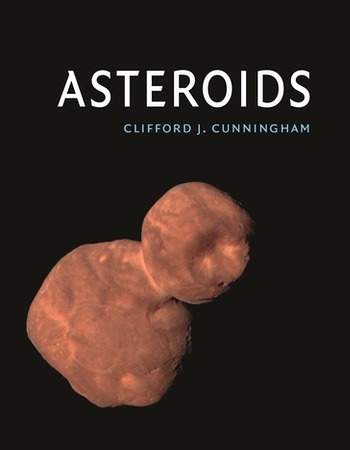Review: Asteroidsby Thomas E. Simmons
|
| The rivalries of 19th century scientists had a direct impact on the development of scientific knowledge concerning asteroids, including the evolution of the name “asteroid.” For a time, “planetoids” vied with “pocket planets” and “Aorates.” |
At times, the text is quite whimsical. Only the eye of an historian would uncover a gem like Edmund Ledger’s 1895 suggestion of asteroid sporting events while speaking at Gresham College (London): “[W]ith a good jump we should be absent for about an hour before we came down again, which fact present[s] the idea of very interesting athletic contests on the minor planets.”
Clifford also does an admirable job of explaining abstract, technical, and complex scientific phenomena to the lay person—a rare and important skill for scientists. He explains how it was the American astronomer Daniel Kirkwood who first noted that asteroids were not evenly distributed throughout the solar system. Rather, certain patterns could be observed. In 1868, Kirkwood posited that the zones of concentration and chasms might be caused by Jupiter. Clifford explains the theory of resonance quite nicely:
The gaps are a result of the phenomenon of resonance, a term taken from acoustics where it was observed that a note struck on a piano can set a nearby violin string vibrating. Considering Jupiter as a celestial piano, and the asteroids as violin strings, a series of resonances were created in the early solar system.
Thus, for example, in the orbital path where a satellite would circle the Sun precisely three times faster than Jupiter (a 3:1 ratio), an empty space or vacant groove in the asteroid belt is observed. Likewise, concentrations of asteroids occur in mathematically consistent patterns (e.g., the Hilda group of asteroids, positioned at 3:2, with an orbital period of two-thirds of one Jupiter year). Explaining the causation of orbital resonances would tax the patience and abilities of most lay readers, but Clifford’s analogy to piano and violin strings is both apt and instructive.
Asteroids is a readable and attractively bound monograph on quality paper with excellent illustrations. It features an index, spare notes, and a selective bibliography. It also contains an appendix titled “Engaging with Asteroids” in which Clifford outlines backyard astronomy projects for observing and studying asteroids in more depth.
Note: we are using a new commenting system, which may require you to create a new account.
